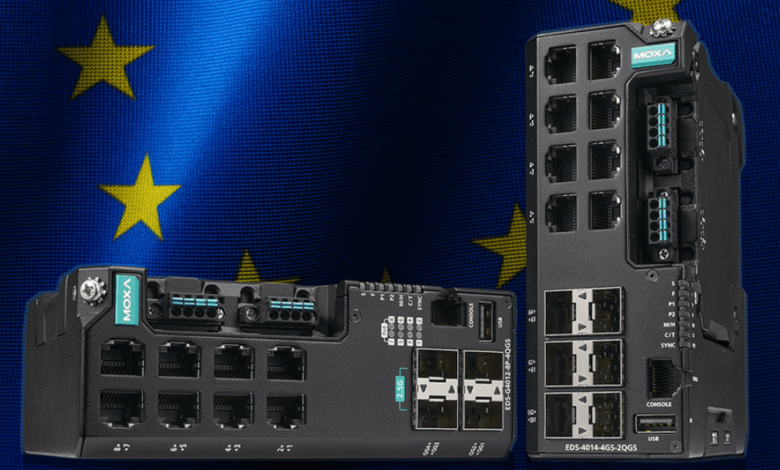Ensuring Cybersecurity in Industrial OT Networks: Key Insights

Industrial computing devices and embedded systems are becoming increasingly interconnected as part of the Industrial Internet of Things (IIoT) and Industry 4.0 initiatives. This connectivity brings numerous benefits, such as improved efficiency, predictive maintenance, and data-driven insights. However, this advancement has an ever-present downside: it introduces new cybersecurity challenges.
Improvements in cybersecurity technologies and practices are continuously being developed to address these challenges. This includes techniques such as intrusion detection systems, encryption, secure coding practices, network segmentation, and regular security audits and updates. Additionally, there is a growing emphasis on building security into the design of industrial systems from the outset rather than treating it as an afterthought.
Why, then, is it so important to take cyber security seriously in Operational Technology (OT) networks, and what can engineers designing industrial networks do to make their networks more secure? This article by Impulse Embedded explores this topic.
What Are the Threats?
Cybersecurity is an essential concept for all businesses, no matter the size. Some of the challenges that OT networks and engineers may face today are:
• Increased Attack Surface: As more devices connect, the attack surface expands, providing more opportunities for cyber threats to infiltrate systems.
• Complexity of Systems: Industrial systems are becoming more complex, with numerous interconnected components and layers of software. Each component represents a potential vulnerability that needs to be secured.
• Sophistication of Threats: Cyber threats constantly evolve, becoming more sophisticated and targeted. Industrial systems need to keep pace with these threats to prevent unauthorised access, data breaches, and operational disruptions.
• Regulatory Requirements: Many industries are subject to regulatory requirements regarding cybersecurity. Compliance with these regulations necessitates ongoing improvements in cybersecurity measures.
• Protection of Critical Infrastructure: Industrial systems often control critical infrastructure, such as power plants, transportation networks, and manufacturing facilities. Ensuring the cybersecurity of these systems is essential to safeguarding public safety and national security.
Where Does NIS2 Come In?
NIS2, short for the Network and Information Systems Directive 2, is a regulatory directive established by the European Union (EU) to enhance cybersecurity for any organisation that is an Operator of Essential Services (OES) or Relevant Digital Service Providers (RDSPs). NIS2 went into force on 16th January 2023 and builds upon the foundation set by its predecessor, NIS1. Its aim is to address cyber threats while ensuring the resilience of critical infrastructure sectors such as energy, transportation, healthcare, and finance.
The directive establishes legal obligations for organisations to implement robust cybersecurity measures, including risk management, incident reporting, and cooperation with national authorities. Member States of the EU have until 17th October 2024 to adopt and publish necessary measures to comply with the directive.
Why Does It Matter?
The need for robust cybersecurity measures has never been more critical than today, and central to the importance of NIS2 is its recognition of the unique vulnerabilities inherent in OT networks. In essence, NIS2 serves as a wake-up call for organisations across the EU to reinforce their defences against evolving cyber threats. While originating in the European Union (EU), the effects of NIS2 are applicable on a global scale, emphasising the universal importance of securing OT networks.
Unlike traditional IT systems, OT networks control physical processes and machinery, making them prime targets for cyber-attacks with potentially catastrophic consequences. This can cause disruptions to power grids or even the sabotage of manufacturing plants, proving that a successful OT breach can be profoundly detrimental to economic stability, public safety, and even national security.
The importance of cybersecurity in OT networks cannot be overstated, and initiatives like NIS2 highlight the obligation for organisations to prioritise cyber resilience in their operations. By integrating robust security measures and adhering to industry standards, engineers can produce safer, more resilient operations where critical infrastructures are shielded from cyber threats, both new and old. In addition, promoting a cybersecure culture within organisations through training and awareness initiatives is essential to effectively mitigate risks.
MOXA and the IEC 62443 Standards
So, what steps can engineers designing industrial networks take to strengthen their cybersecurity defences? One way is through IEC 62443, a globally recognised series of standards for securing industrial control systems (IACS). The IEC 62443 standards aim to enhance the cybersecurity of industrial control systems and reduce the risk of cyber-attacks that could have serious consequences throughout the lifecycle of industrial networks. Engineers can safeguard critical infrastructures from anyone that wants to exploit vulnerabilities in the system by adopting the cybersecurity best practices outlined in standards like IEC 62443.
In 2022, MOXA released the EDS-4000 range, one of the world’s first IEC 62443-4-2 compliant industrial Ethernet switches. These DIN-rail switches are optimal for safeguarding against malicious activity due to their built-in hardened security, developed by following the stringent software development lifecycle of the IEC standard.
IEC 62443-4-2 is part of the IEC 62443 series that specifically addresses the technical security requirements for product development of industrial automation and control systems (IACS). This standard focuses on the security features that should be implemented within the design and development process of industrial control system products to ensure they are resilient against cyber threats. Utilising IEC 62443 and IEC 62443-4-2 compliant industrial devices like these makes a significant difference when designing industrial networks to ensure they are cybersecure from the get-go.
Cybersecure Solutions with Industry Insight
As a supplier of cybersecure industrial computing devices such as those manufactured by MOXA, Impulse Embedded know how vital it is to maintain a safe and secure network. By providing robust and secure devices, Impulse Embedded safeguard their operations and empower their customers to navigate cybersecurity directives with confidence. The NIS2 directive serves as a critical reminder that today, security is not just a requirement but an essential cornerstone of innovation.
For more information, please contact our knowledgeable team at 01782 337 800 or email sales@impulse-embedded.co.uk.



